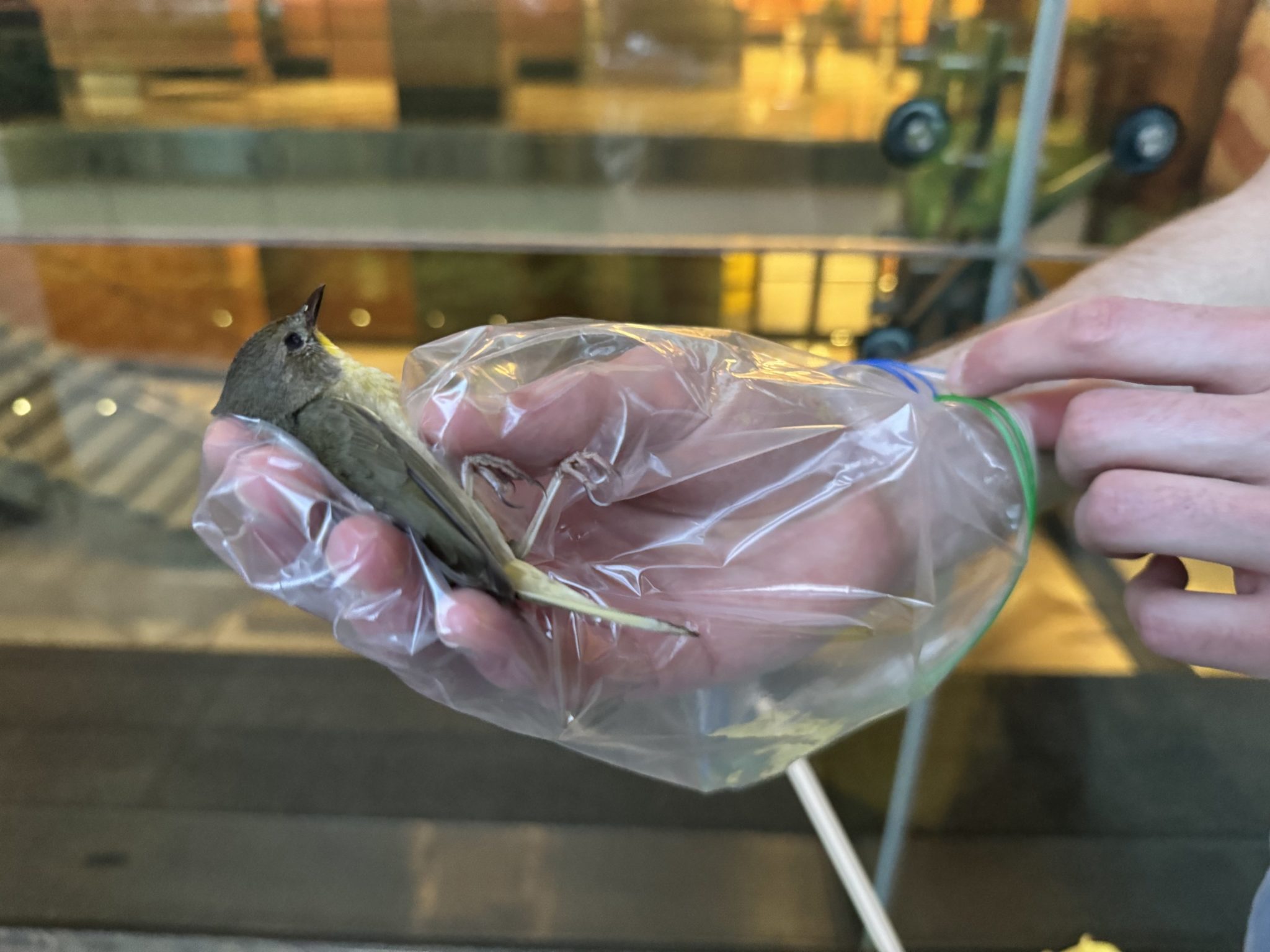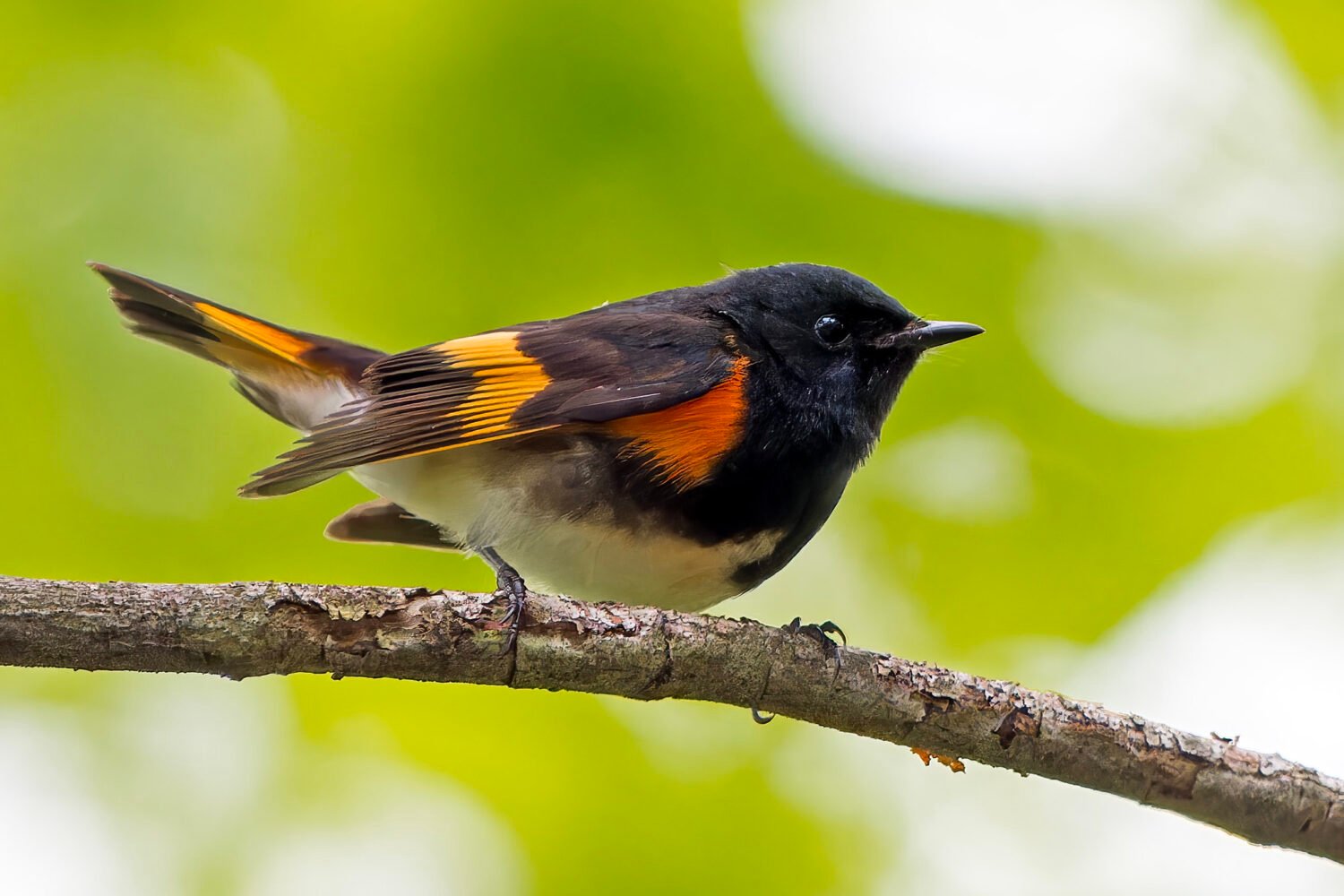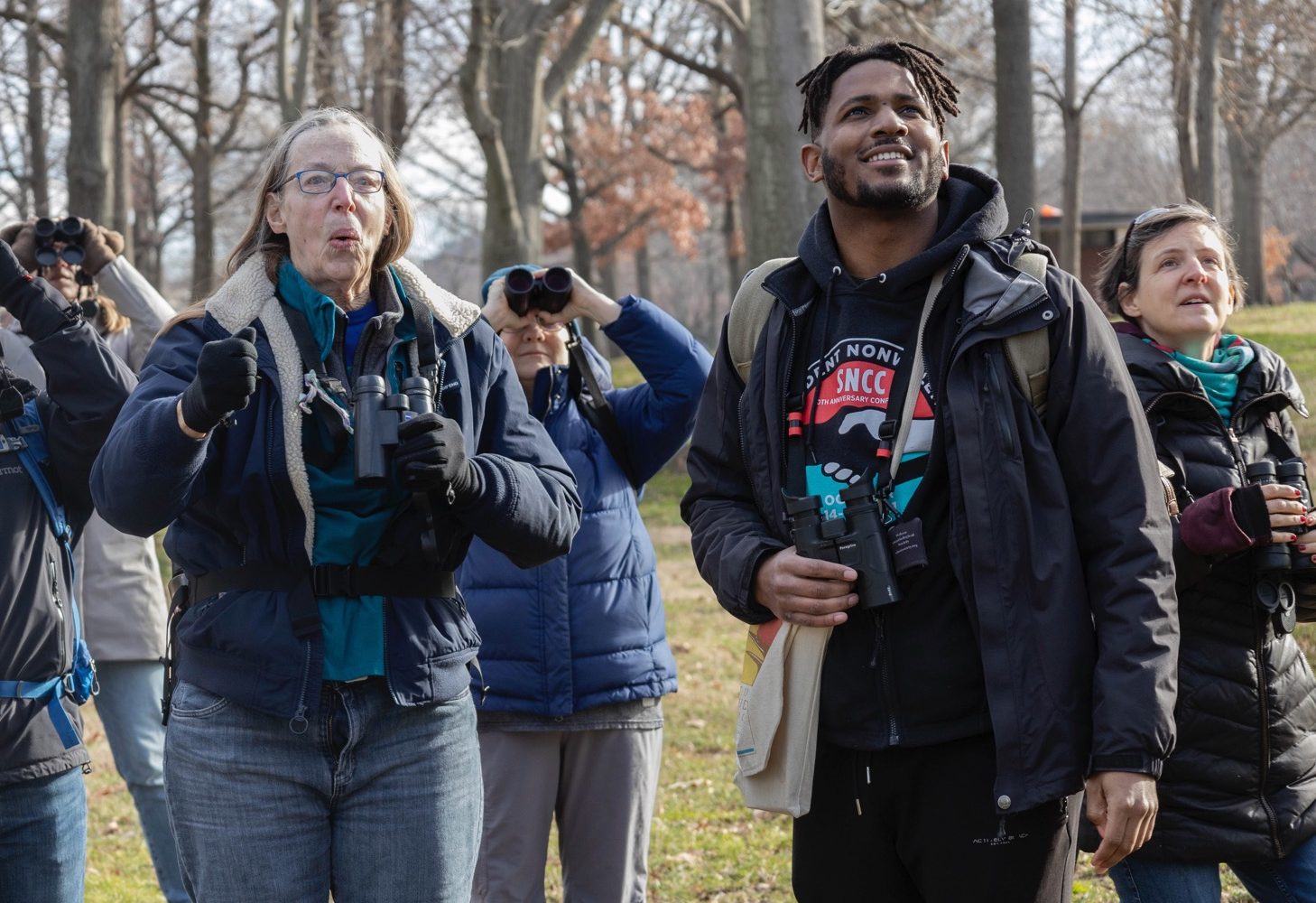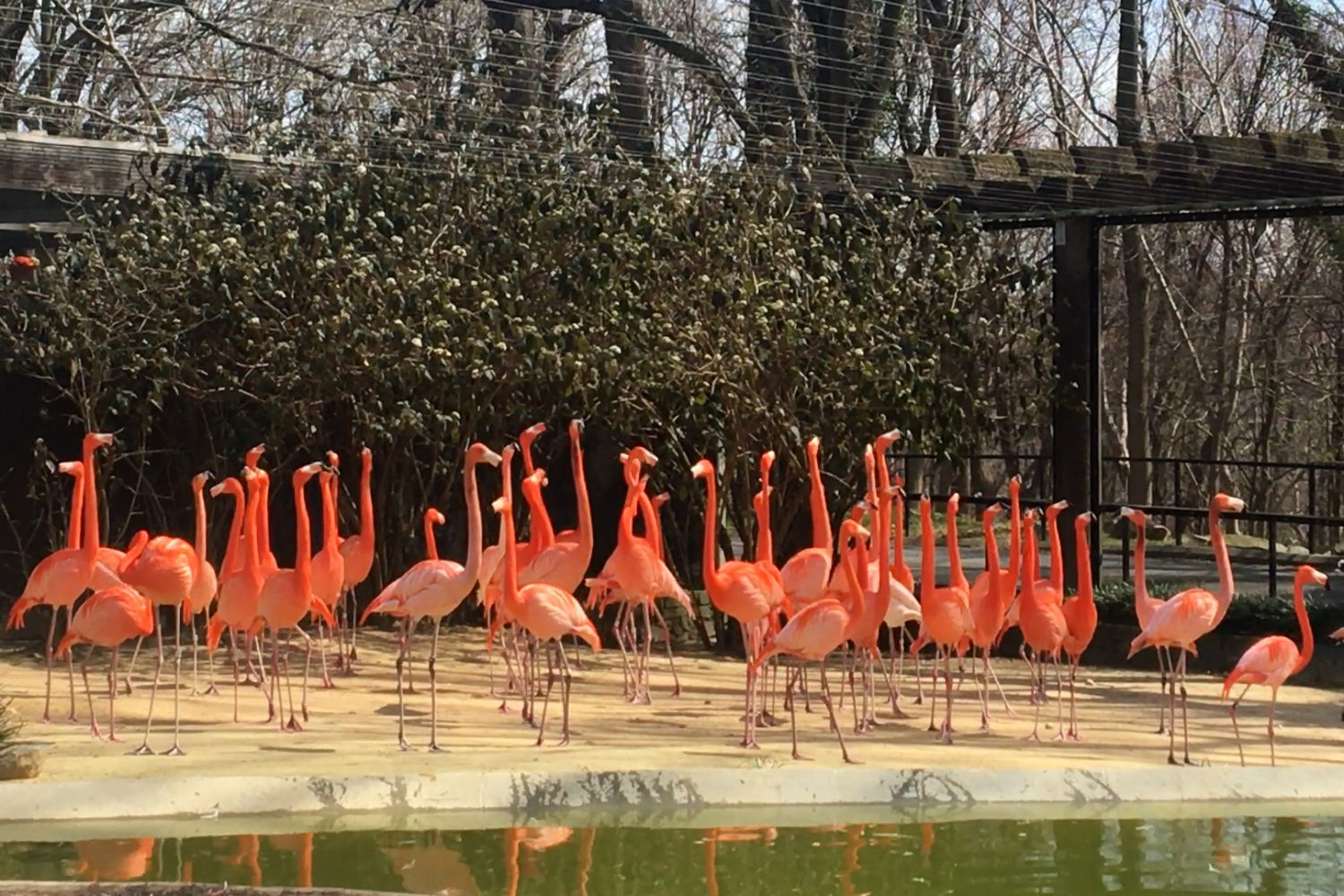With a five-story glass atrium that illuminates lush groves of green bamboo inside, the Thurgood Marshall Federal Judiciary Building, across the street from Union Station, is beautiful.
It’s also a death trap.
During spring and fall, the building often accounts for the largest number of strikes from migrating birds, who are either drawn to its inviting bamboo or fooled by reflections of surrounding foliage.
“It’s not uncommon to walk up to that building and find three or four birds at once,” says Stephanie Dalke, the interim coordinator for Lights Out DC, a conservation program that works to reduce the number of bird/glass collisions in the city, in part by collecting data on which buildings receive the most strikes.
To do this, volunteers with the 14-year-old group—run by the wildlife rehab center City Wildlife—get up early in the morning to collect dead and injured birds that have collided with buildings throughout migration seasons. Last year alone, volunteers collected 500 birds, many of them migratory species whose numbers have been declining for decades. According to Cornell University’s Lab of Ornithology, migratory bird populations have decreased by 28 percent—or about 2.5 billion—since 1970.
It’s why, at around 5:45 AM on a recent muggy May morning, Ethan Ableman stands outside the Thurgood Marshall Building. As a Lights Out volunteer, he wears a neon safety vest and carries a tote bag filled with the things he’ll need for the next hour or so: rubber gloves, paper and plastic bags, and a net (in case there are any live birds that need rehabilitating).
“We’re entering the peak right now, so I’m expecting to find birds every time I go out, unless the radar says otherwise,” says Ableman, who tracks migration patterns via Cornell’s BirdCast. The evening prior, the site predicted “high” levels of migration, with more than 20,000 birds per kilometer flying over DC in the night.
Fortunately—and to Ableman’s surprise—there appears to have been no bird collisions with the Thurgood Marshall Building this time. Still, it’s only the first building and it’s not long before we find the day’s first victim.
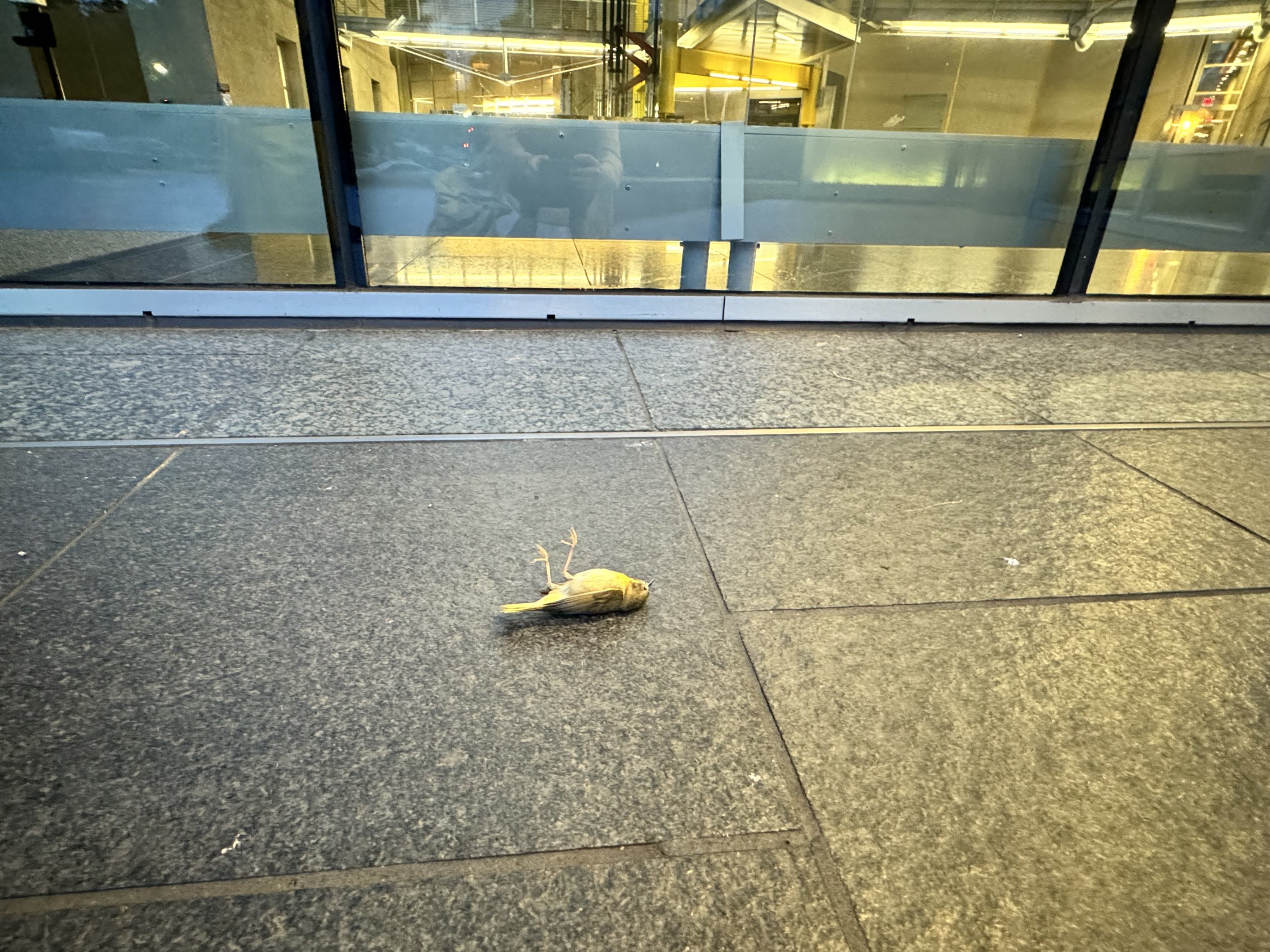
From the sidewalk, it first looks like a crumpled leaf. But as we approach, its olive and yellow plumage come to light. It’s a small warbler—a female common yellowthroat, we think—who died after flying into the windows at 300 New Jersey Avenue, NW, where volunteers found nearly 300 other birds between 2010 and 2019. Tenderly, Ableman scoops it into a plastic Ziploc bag.
Ableman—who likes to say “hello” and “good morning” to all the chirpy birds we encounter on our walk—began volunteering with Lights Out about a year ago, not long after he discovered a stunned ovenbird on his way to the office one morning. That was when he learned that the First Street building he works in is also one of the most deadly in the city. “I thought, ‘Well, I get up early anyway, so I may as well do this,’ ” says Ablemean, who is also a birder. “It’s sort of my way of contributing to the conservation efforts.”
Back on our walk, it’s not long before we find a second dead warbler outside a neighboring building. Its limp body was likewise scooped into another Ziploc bag. “This is a good vantage point about what the [building’s] issue is,” says Ableman. “[Its reflection] looks like you could keep flying straight through beautiful Senate Park.”
Outside another building at 101 Constitution Avenue, NW, we discover a stunned hermit thrush, who repeatedly flutters against the building’s glass. Though clearly disoriented, the bird can still fly, which seems like a good sign. However, “because they may have some internal internal injuries or a concussion, we try to capture them anyway,” says Ableman, who stealthily gets on his hands and knees before the weary thrush flies away. “They’re very well adapted to not be caught.”
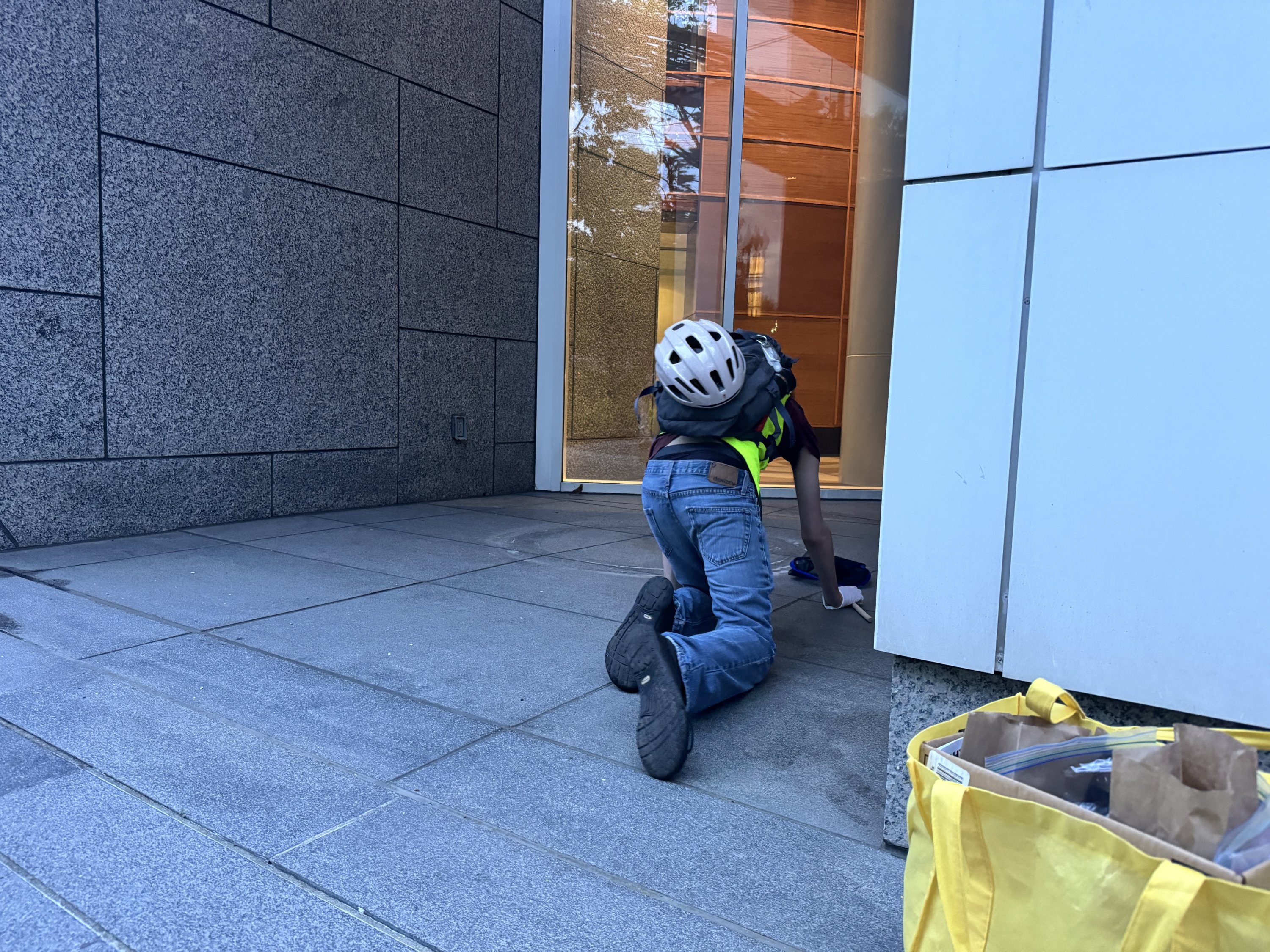
Regardless, he’ll mark the sighting down in his notes. And when he’s done with the route, Ableman will pass the data, along with the two dead birds he collected, to City Wildlife, which will freeze and ID the carcasses before eventually sending them to approved scientific institutions, such as the Smithsonian’s Museum of Natural History, which has plenty of past Lights Out birds in its collections, says Dalke. Other birds might be sent off to labs elsewhere for study.
“Having the bird specimens for scientists and researchers to use is great,” says Dalke. “They can measure their feathers or weight. They can do DNA analysis of what they’ve eaten. It gets pretty cool.”
Between 2010 and 2019, Lights Out DC says it documented more than 3,000 birds, spanning more than 100 species—including 231 American woodcock, 284 ovenbirds, 59 cedar waxwings, and 43 wood thrush (notably, DC’s official bird). Of the ones collected, 26 percent were considered “Species of Greatest Conservation Need.” Of course, that’s only counting the birds discovered by volunteers, says Dalke.
Still, any data helps. At the end of the year, Lights Out DC tallies up its totals—how many of each species were killed, which buildings were associated with the most deaths—and then provides a report to Fish and Wildlife Services as well as the District. The reports have helped inform local legislation intended to make the city safer for birds. Last year, for instance, DC passed the Migratory Local Wildlife Protection Act, which requires that all new permits for buildings use bird friendly materials that reduce collisions.
While the act goes into effect this October, “everything else will still need to be retrofitted,” says Dalke. “It’s really great that the bill was passed, but now we have to focus on fixing the problematic ones [that already exist or are being built].”
Throughout our walk, Ableman points to a handful of buildings under construction—many with large glass slabs slowly filling their framing. “I look at a building like this one and think ‘that’s going to be a problem,’ ” he says.
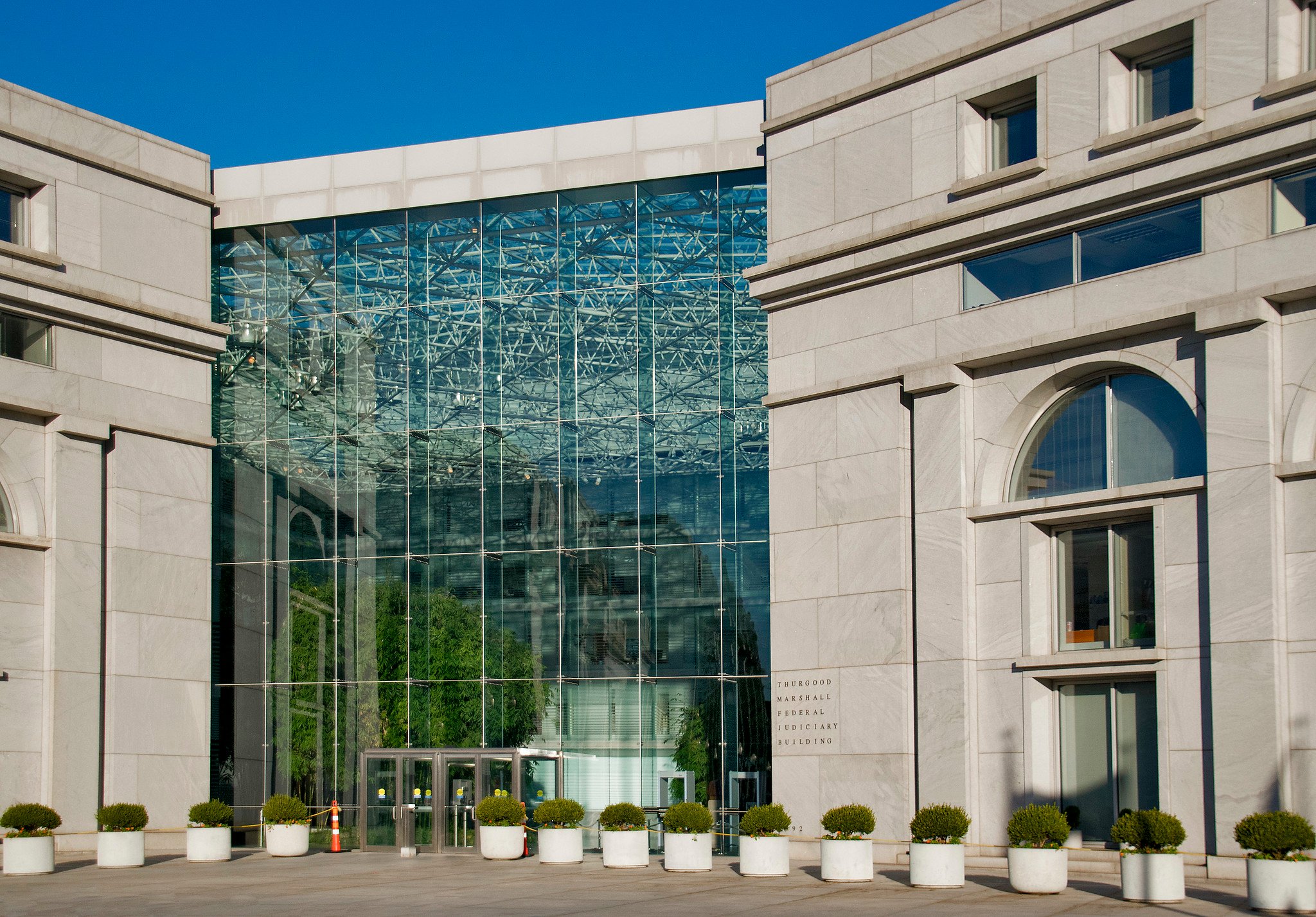
But there are actions existing buildings can take, says Dalke. The most effective is to treat windows so that they’re less reflective. “It’s often not even the entire building that is killing birds,” she says. “There might be one or two spots that tend to be a problem and they can go and install a film on them.” Otherwise, she says an easy, cost-free alternative is to do as the group’s name implies—turn off lights between 11 PM and 6 AM during migration seasons.
For example, when the Thurgood Marshall Building began turning off all of its nonessential lights at night during spring and fall, City Wildlife reported that its number of bird strikes dropped by two-thirds.
“It’s an easy thing that anybody can do and it can help a lot,” says Dalke, who adds that Lights Out is always looking for more volunteers, especially during the fall migration season when totalities tend to be even higher (likely due to the number of juveniles born in the springtime who are embarking on their first migration, she says).
While Ableman admits that “getting up at the crack of dawn to go look for dead animals is not super attractive,” he finds the process rewarding and loves when he’s able to see a rescued window strike bird make a full recovery, which recently happened with a white-throated sparrow he believes was one he found several weeks ago.
“I didn’t ask but, I looked on [City Wildlife’s] Instagram and they recently made a post about a white-throated sparrow they had rehabbed. Based on what they said and the timing, I’m pretty sure it was a bird I found. They released it, so that feels really good. It’s something that makes the process feel important.”
View this post on Instagram

